Ever wonder why your online store gets visitors but no sales? Your products are good, so what gives?
Usually, the problem is your ecommerce website design. People check out your site and leave without buying anything. They make up their minds fast – like, really fast. If your site looks unprofessional or confusing, they’re gone.
I get it. You’re not a web designer. You just want to sell your products online. But here’s what I learned after fixing ecommerce website design problems for years – small changes make a huge difference.
Look, you don’t have to blow your budget on some fancy best ecommerce website design. Forget about trendy features and complicated stuff. Just focus on making an ecommerce site design where people actually want to shop.
Here’s the thing – every successful website design ecommerce business follows four simple rules. Get these right, and more visitors will become customers. Miss them, and you’ll keep losing sales to competitors with better ecommerce web design.
I’m going to show you exactly what these four things are. They’re not complicated, but they work. Ready to improve your best ecommerce website design and start making more sales?
Read More: To Know about Dos and Donts of Ecommerce Web Design
Importance of Best Ecommerce Websites Designs
The importance of the Best ecommerce website designs is the success of the online retailer, ASOS. ASOS is a global fashion and beauty retailer that specializes in fast fashion for young adults. They designed their website with the customer in mind, featuring a clean and modern layout, intuitive navigation, and high-quality product images.
ASOS also incorporates social proof into its website design by prominently displaying customer reviews and ratings, as well as showcasing user-generated content on its product pages. Additionally, they have made the checkout process as simple and seamless as possible, with a one-page checkout that eliminates unnecessary steps and reduces cart abandonment.
As a result of its focus on Best ecommerce website designs, ASOS has experienced significant growth in recent years. Their online sales have increased year over year, and they now have millions of customers worldwide. This success can be attributed in part to their well-designed ecommerce website, which has helped to improve the customer experience and increase sales.
Visit Here: Create Stunning Website Design.
Key Elements of Ecommerce Websites Design
1. User interface
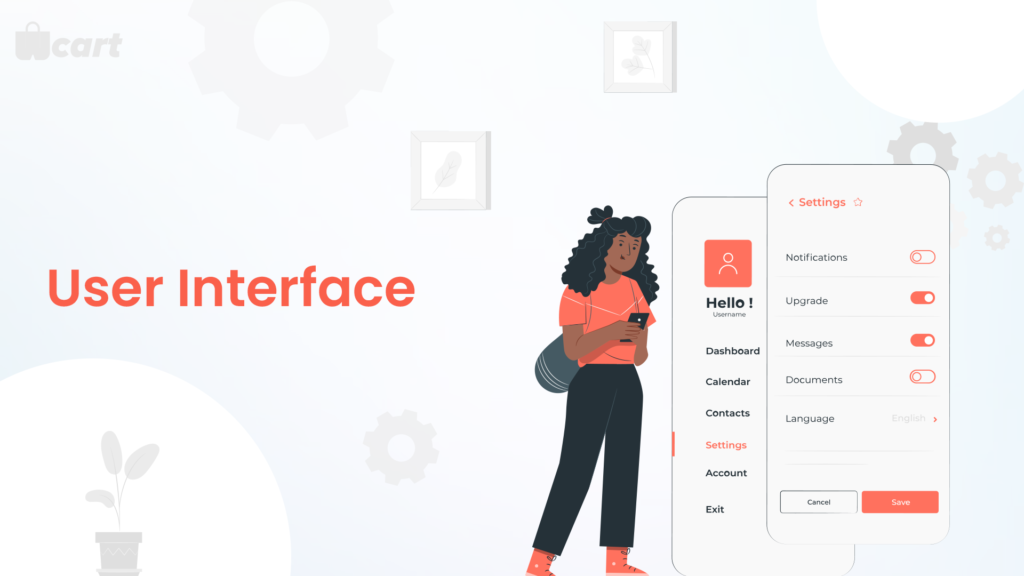
User interface (UI) refers to the visual and interactive design of a software application, website, or other digital product that a user interacts with. It encompasses everything from the layout and color scheme to the buttons, icons, and menus that a user interacts with to accomplish tasks. The goal of a well-designed user interface is to make it easy and intuitive for users to navigate and accomplish their goals within the application or website. A well-designed UI should be visually appealing, and responsive, and provide clear and concise feedback to the user as they interact with the product.
Read More: To Create an Website With User Friendly
2. Navigation
Navigation is an essential element of Best ecommerce websites designs that refers to the process of moving through the website’s pages and content. The main goal of navigation is to provide a clear and intuitive path for customers to find what they are looking for on your website.
Effective navigation can improve the user experience and help customers quickly find the products they want to purchase. It can also help to reduce the bounce rate of your website by keeping visitors engaged and encouraging them to explore more pages on your site.
Some important aspects of navigation in Best ecommerce website designs include:
- Clear labeling: Navigation labels should be clear and easy to understand, using terms that are familiar to the target audience.
- Consistency: Navigation should be consistent throughout the website, with the same labels and menu structures used across all pages.
- Accessibility: Navigation should be accessible and easy to use for all customers, including those with disabilities.
- Mobile-friendliness: Navigation should be optimized for mobile devices, with easy-to-use menus and buttons that are accessible on smaller screens.
By prioritizing navigation in your Best ecommerce website designs, you can improve the user experience, reduce frustration, and ultimately increase sales.
3. Typography
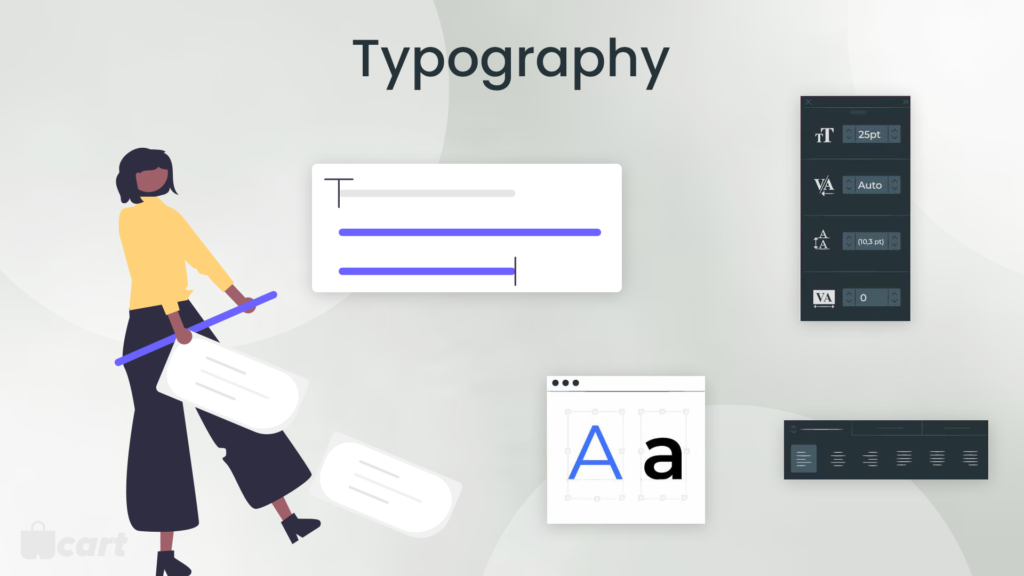
Typography refers to the art and technique of arranging types in a visually appealing and readable way. In Best ecommerce website designs, typography is a critical element that can affect the overall look and feel of the website, as well as its usability and accessibility.
When choosing typography for an ecommerce website, it’s important to consider factors such as legibility, readability, contrast, and consistency. The typography should be easy to read and should complement the overall design of the website. The font size, weight, and spacing should be carefully chosen to ensure that the text is clear and easy to read, particularly on smaller screens such as mobile devices.
Additionally, ecommerce websites often use typography to create a hierarchy and guide the user’s eye to important information such as product descriptions, pricing and calls to action. This can be achieved through the use of larger font sizes, bold or italicized text, and varying levels of contrast.
A visually appealing, readable, and effective website is ensured by carefully considering and executing typography, which plays a crucial role in the best ecommerce websites designs.
4. Color scheme
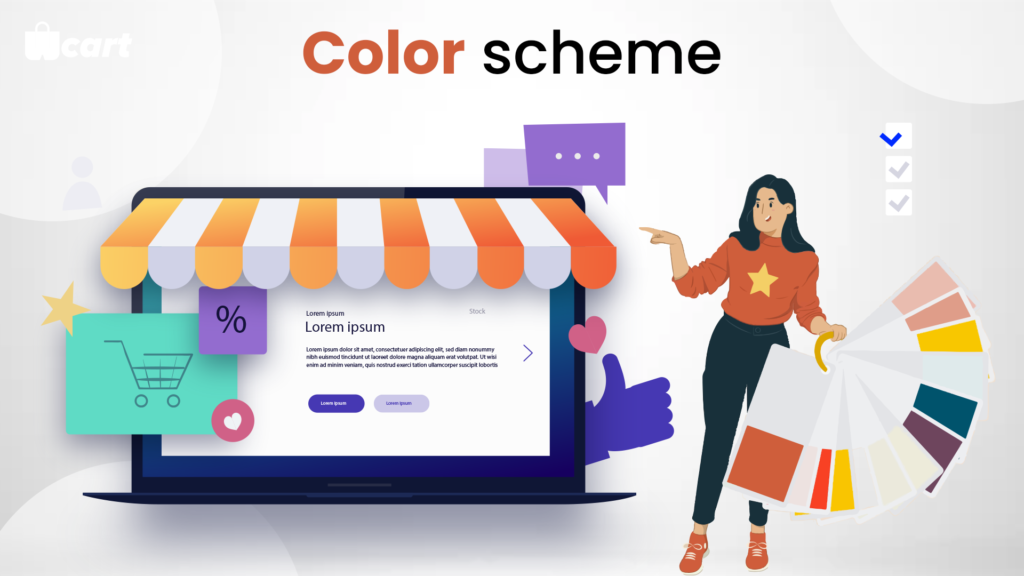
The color scheme of an ecommerce website refers to the selection and use of colors throughout the site’s design. Color is an important aspect of website design, as it can influence the mood and perception of visitors.
When choosing a color scheme for an ecommerce website, it is important to consider the brand’s identity and target audience. Colors can convey different emotions and meanings, and it is important to choose a color scheme that aligns with the brand’s values and resonates with the target audience.
For example, a website selling natural and organic products may choose a color scheme that incorporates earthy tones such as greens and browns to convey a sense of nature and health. On the other hand, a website selling luxury goods may opt for a color scheme that uses rich colors such as gold and deep purples to convey a sense of elegance and sophistication.
Overall, choosing the right color scheme is an important aspect of Best ecommerce websites designs, as it can influence how visitors perceive the brand and impact their purchase decisions
Planning Your Ecommerce Websites Design
1. Defining your target audience
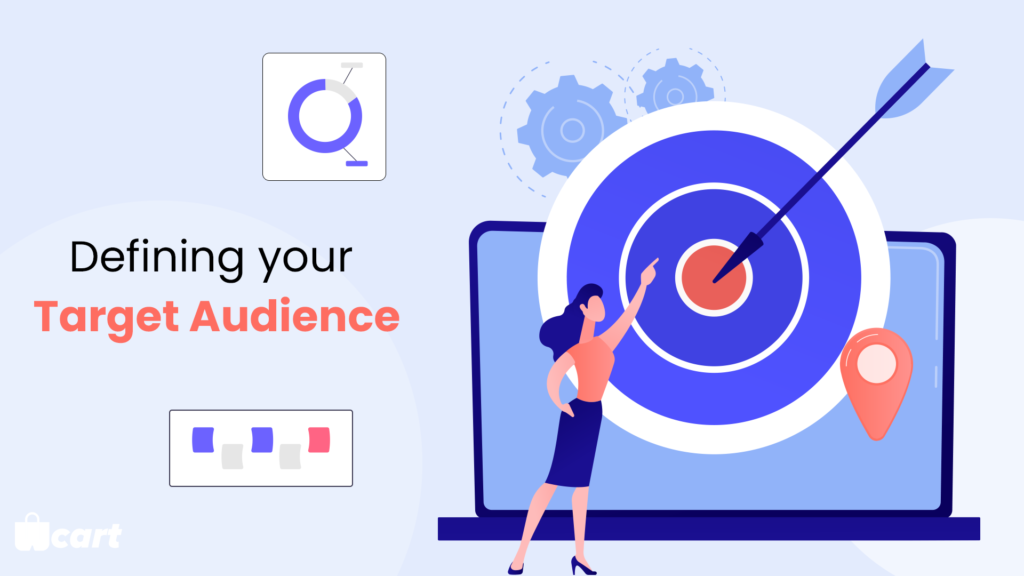
Defining your target audience is a crucial step in creating the Best ecommerce website designs. Your target audience refers to the specific group of people who are most likely to be interested in your products or services, and who you want to reach with your marketing efforts.
To define your target audience, you should consider factors such as age, gender, location, interests, and purchasing habits. You can also analyze your existing customer base to gain insights into who your typical customers are and what they are looking for in your products.
By defining your target audience, you can tailor your Best ecommerce websites designs to their specific needs and preferences. This can include everything from the visual design and layout of your website to the language and tone used in your marketing messaging.
2. Setting goals and objectives
Setting goals and objectives is a critical step in creating a Best ecommerce websites designs. Without clear goals and objectives, it is difficult to measure the effectiveness of your website and make improvements over time.
Goals are broad statements that describe what you want to achieve with your ecommerce website. Examples of goals for an ecommerce website could include increasing sales, improving customer engagement, or expanding your customer base.
Objectives, on the other hand, are specific and measurable targets that you set in order to achieve your goals. For example, an objective for an ecommerce website with the goal of increasing sales could be to increase the conversion rate by 10% within the next six months.
When setting goals and objectives for your Best ecommerce websites designs, it is important to make them SMART:
- Specific: Clearly define what you want to achieve
- Measurable: Choose metrics that can be tracked and measured
- Achievable: Set realistic targets that are within reach
- Relevant: Ensure that your goals and objectives align with your overall business objectives
- Time-bound: Set a deadline for achieving your objectives
By setting SMART goals and objectives, you can create a roadmap for your Best ecommerce websites designs and measure your progress over time. This will help you to identify areas where improvements can be made and make data-driven decisions to improve the effectiveness of your website.
3. Choosing the Right Ecommerce Platform
Choosing the right ecommerce platform is a critical decision for any online business. The ecommerce platform you choose will impact the functionality, design, and overall performance of your online store. Here are some factors to consider when choosing the right ecommerce platform:
- Scalability: Your ecommerce platform should be able to grow with your business. Make sure the platform can handle an increasing number of products, customers, and orders without sacrificing performance.
- Customization: Choose an ecommerce platform that offers customization options to help your online store stand out from the competition. Look for a platform that offers templates, themes, and other design features that can be customized to fit your brand and business needs.
- Payment gateways: Ensure the platform supports your preferred payment gateway and can handle multiple payment options to meet the needs of your customers.
- Security: Your ecommerce platform must be secure to protect sensitive customer data such as credit card information. Look for a platform that supports HTTPS encryption, two-factor authentication, and other security features.
- Customer support: Choose an ecommerce platform with strong customer support to ensure that you can quickly resolve any technical issues that may arise.
- Budget: Consider the cost of the platform, including any transaction fees and ongoing maintenance costs, to ensure it aligns with your budget.
By considering these factors when choosing the right ecommerce platform, you can select a platform that fits your business needs and helps you achieve your ecommerce goals.
Explore More: Choosing of Right Ecommerce Platform
Designing Your Ecommerce Websites
1. Homepage design
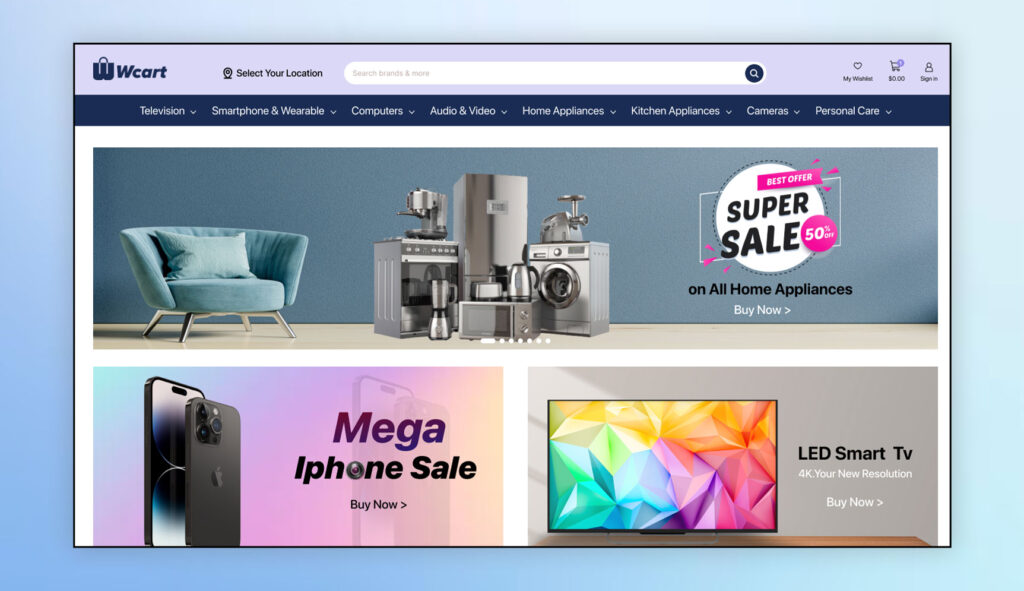
The homepage is the first page that visitors see when they arrive at your ecommerce website. It’s essentially the gateway to the rest of your online store, and as such, it plays a critical role in determining whether visitors will stay and explore or leave immediately.
Some key elements that should be included on a homepage include:
- A prominent and eye-catching header that includes your logo and navigation menu
- A featured banner or slideshow that highlights your top products or promotions
- A clear and concise value proposition that explains what sets your ecommerce business apart from the competition
- Product categories and subcategories that help visitors find what they’re looking for quickly and easily
- Social proof elements such as customer reviews and ratings, testimonials, and press mentions
- A footer that includes important information such as your contact details, shipping and return policies, and any certifications or awards that your business has received.
Overall, a well-designed homepage is crucial for creating a positive first impression and encouraging visitors to engage with your online store.
2. Category and product pages
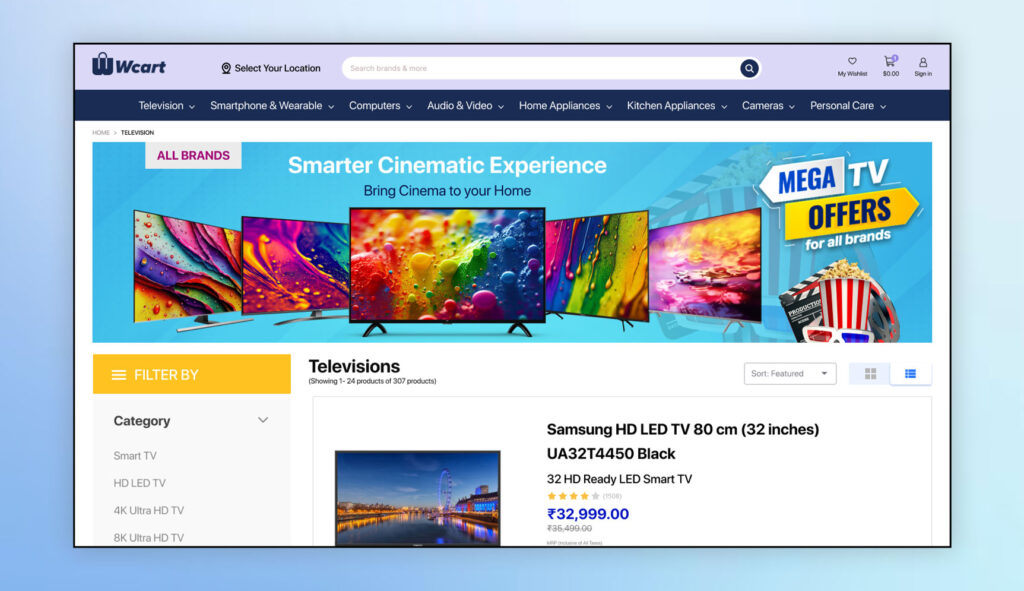
Category pages are pages that display a collection of related products within a specific category, such as clothing, electronics, or home decor. These pages typically include a combination of product images, descriptions, prices, and filtering options to help customers narrow down their search and find the products they are looking for. Category pages are important because they help customers navigate through a large inventory of products and make it easier for them to find what they want.
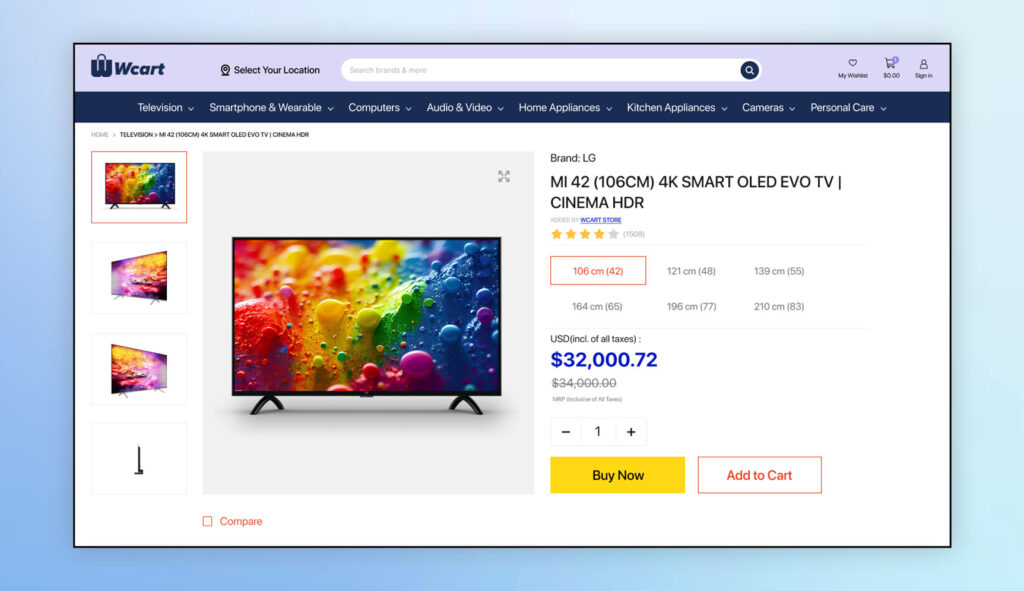
Product pages, on the other hand, are pages that display detailed information about a single product. These pages typically include product images, descriptions, specifications, reviews, and pricing information. Product pages are important because they provide customers with all the information they need to make an informed purchase decision. A well-designed product page can also help to increase customer confidence in the product and improve the likelihood of a sale.
To provide a seamless and intuitive shopping experience for the customer, it is important to optimize the layout, design, and content of both category and product pages on an e-commerce website.
3. Shopping cart and checkout
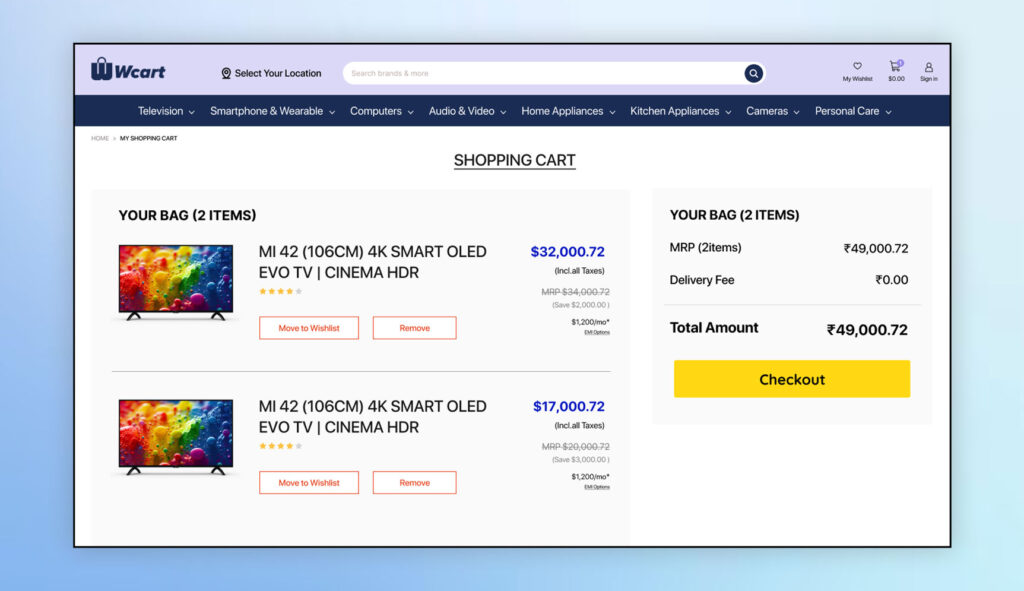
The shopping cart is a virtual cart where customers can store items they want to purchase. This allows them to continue browsing the website and add additional items to their cart until they are ready to checkout. The shopping cart typically displays the product name, image, price, and quantity, as well as the subtotal and total cost of the order.
Checkout is the process where customers enter their shipping and billing information and complete their purchase. The checkout process typically consists of several steps, such as entering contact and shipping information, selecting a shipping method, entering payment details, and reviewing the order before submitting it. The checkout page should be designed to be easy to use, with clear instructions and visual cues to guide the customer through the process.
Both shopping cart and checkout are critical elements of Best ecommerce websites designs, as they directly impact the customer experience and can affect sales. A well-designed shopping cart and checkout process can make the purchasing process smooth and hassle-free for customers, reducing cart abandonment and increasing conversion rates.
Read More: To Know about Shopping Website Designs
4. Blog and content pages
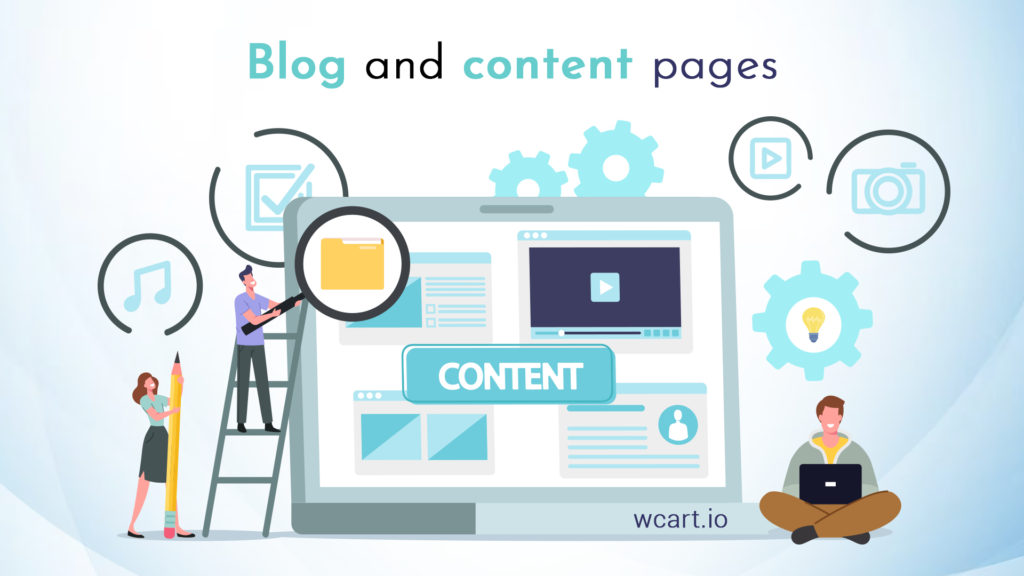
Blogs and content pages are two important types of pages that can be included in an ecommerce website. A blog is a section of the website where you can regularly publish articles or posts related to your industry, products, or services. The goal of a blog is to attract visitors to your website, provide them with valuable information, and ultimately drive conversions.
Content pages, on the other hand, are static pages that provide information about your business, products, or services. These pages typically include information about your company’s history, mission, and values, as well as detailed descriptions of your products or services.
Both blogs and content pages can help to improve your website’s search engine rankings and provide valuable information to your customers. However, while blogs are updated frequently with new content, content pages tend to be more static and provide evergreen information that remains relevant over time. It’s important to include both types of pages in your ecommerce website to provide a comprehensive and informative user experience.
Enhancing Your Ecommerce Websites
1. Social media integration

Social media integration involves connecting your ecommerce website to various social media platforms, such as Facebook, Twitter, Instagram, and Pinterest. This allows you to promote your products on social media, drive traffic to your website, and increase sales.
Social media integration can take many forms, such as adding social media buttons to your website, allowing customers to log in to your website using their social media accounts, and displaying social media feeds on your website. It can also include running social media ads and campaigns to target specific audiences and drive traffic to your website.
Overall, social media integration is an important aspect of Best ecommerce website designs as it can help you to increase brand awareness, reach new customers, and ultimately drive more sales.
2. Email marketing
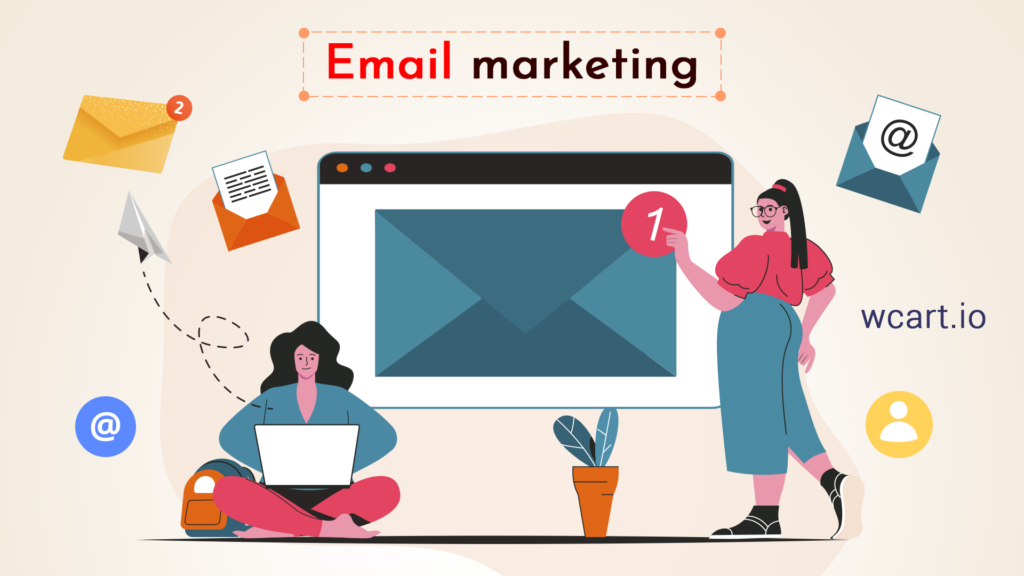
Email marketing is a digital marketing strategy that involves sending commercial messages, typically in the form of emails, to a targeted audience. These emails are used to promote products or services, build brand awareness, and engage with customers.
To create effective email marketing, you need to tailor high-quality content to the needs and interests of your audience, use attention-grabbing subject lines and personalization to increase open rates and analyze metrics such as click-through rates and conversion rates to improve future campaigns.
Email marketing can be a cost-effective way to reach a large audience, build customer loyalty, and drive sales. It is a powerful tool for businesses of all sizes and industries and can be integrated with other digital marketing strategies to create a comprehensive marketing plan.
3. Search engine optimization (SEO)

Search Engine Optimization (SEO) is the practice of optimizing a website to improve its visibility and ranking in search engine results pages (SERPs). The goal of SEO is to increase the quantity and quality of organic traffic to a website. This is achieved by optimizing various elements of the website, including content, meta tags, images, and links, to make it more appealing to search engines.
SEO involves both on-page and off-page optimization techniques, such as keyword research, content creation, link building, and social media marketing. By implementing effective SEO strategies, businesses can improve their online presence and attract more potential customers to their website.
4. Analytics and tracking
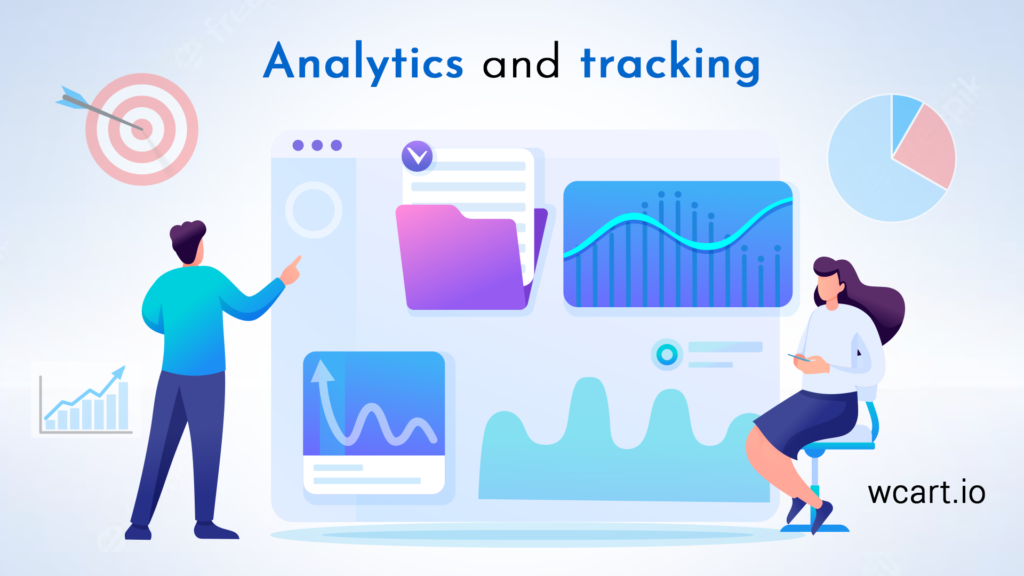
Analytics and tracking refer to the process of collecting and analyzing data about website visitors and their behavior. This data can include information such as the number of visitors to a website, the pages they visit, how long they stay on each page, and whether they complete certain actions, such as making a purchase or filling out a form.
Analytics and tracking tools can help website owners understand how visitors are interacting with their website and identify areas for improvement. By tracking website metrics and analyzing user behavior, website owners can make data-driven decisions about how to optimize their website for better performance and user experience.
Launching and Maintaining Your Ecommerce Websites
1. Launching your website
The Launching of your website involves making your website live and accessible to the public. This includes choosing a domain name, selecting a hosting provider, designing and developing your website, and finally, publishing it on the internet.
To ensure a successful website launch, you must thoroughly test and optimize it for search engines. This includes checking for broken links, optimizing images and content, and ensuring that the website is mobile-friendly.
Once your website is ready to launch, you can begin promoting it through various marketing channels, such as social media, email marketing, and paid advertising. It is also important to monitor your website’s performance after launch and make necessary updates and improvements to ensure its continued success.
2. Post-launch testing and optimization
After launching an ecommerce website, the process of continuously evaluating and improving it involves using data analytics and customer feedback to identify areas that can be improved, such as page load times, checkout flow, or product descriptions.
This process includes testing different versions of a page using A/B testing or multivariate testing to compare and determine which one performs better.
Post-launch testing and optimization are important because it allows ecommerce businesses to stay competitive and adapt to changing customer needs and preferences. By continuously improving their website, businesses can increase customer satisfaction, improve conversion rates, and ultimately drive more sales.
Read More: Launching Ecommerce Website
3. Website maintenance
Website maintenance refers to the ongoing process of keeping a website up-to-date, secure, and functioning properly. It includes tasks such as updating software, fixing bugs and errors, monitoring website performance, optimizing for search engines, and backing up data.
Regular website maintenance is important for ensuring a positive user experience and preventing issues such as downtime, security breaches, and broken links. It can also help to improve website speed and functionality, which can lead to higher search engine rankings and increased traffic. Website maintenance can be performed by the website owner or by a professional web developer.
4.Customer support
Customer support refers to the process of providing assistance and guidance to customers who have questions or issues with a product or service. It is an essential aspect of any business, as it helps to ensure customer satisfaction and loyalty.
Customer support can take many forms, including phone support, email support, live chat, and self-service options such as FAQ pages and knowledge bases. Good customer support should be timely, personalized, and helpful, and should aim to resolve customer issues as quickly and efficiently as possible.
Conclusion
So here’s the deal your ecommerce website design either helps you make money or it doesn’t. There’s no middle ground here.
We’ve covered the stuff that actually works: getting your best ecommerce websites designs fundamentals right, picking a platform that doesn’t suck, adding reviews so people trust you, and making checkout painless. Plus keeping your customers happy when they have questions.
Look, this isn’t complicated. You don’t need to be some design genius. Just follow what successful ecommerce site design owners do and stop overthinking it.
The hard truth? While you’re sitting there wondering if your website is good enough, your competitors with better ecommerce web design are making the sales you should be making.
Done losing customers to ugly websites? [Fix your ecommerce website design today and start actually making money!]




Leave a Reply